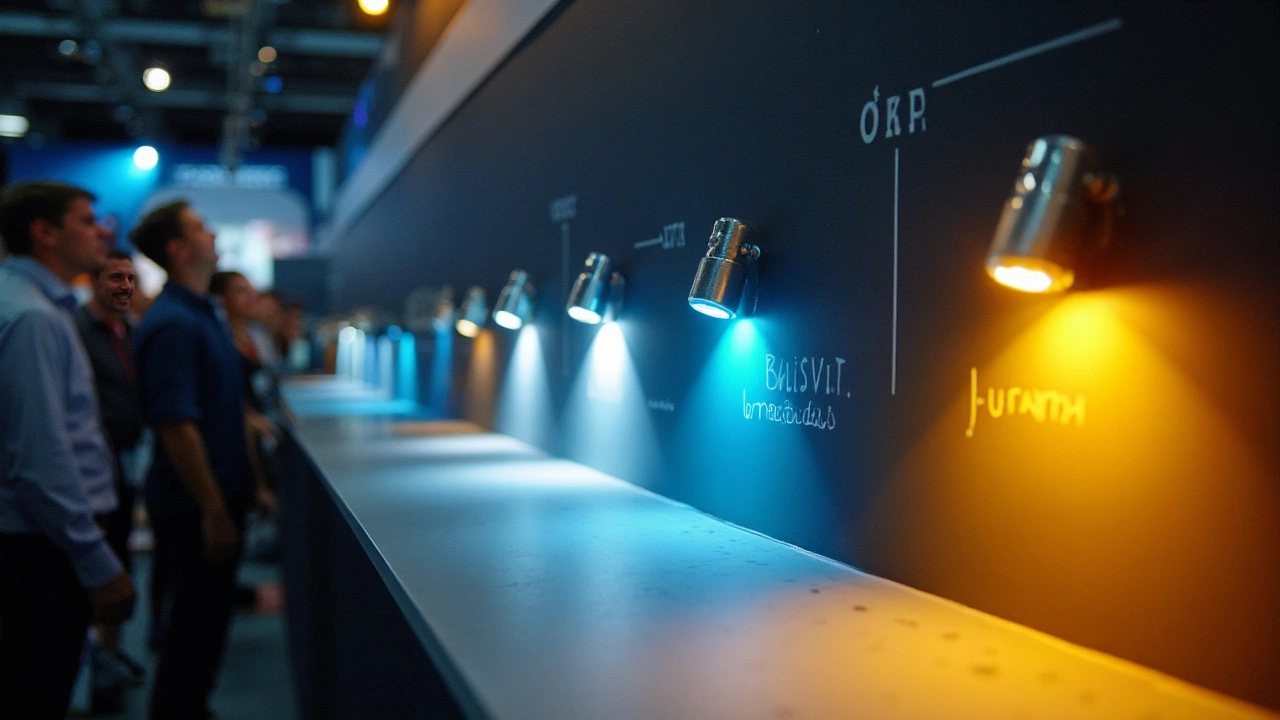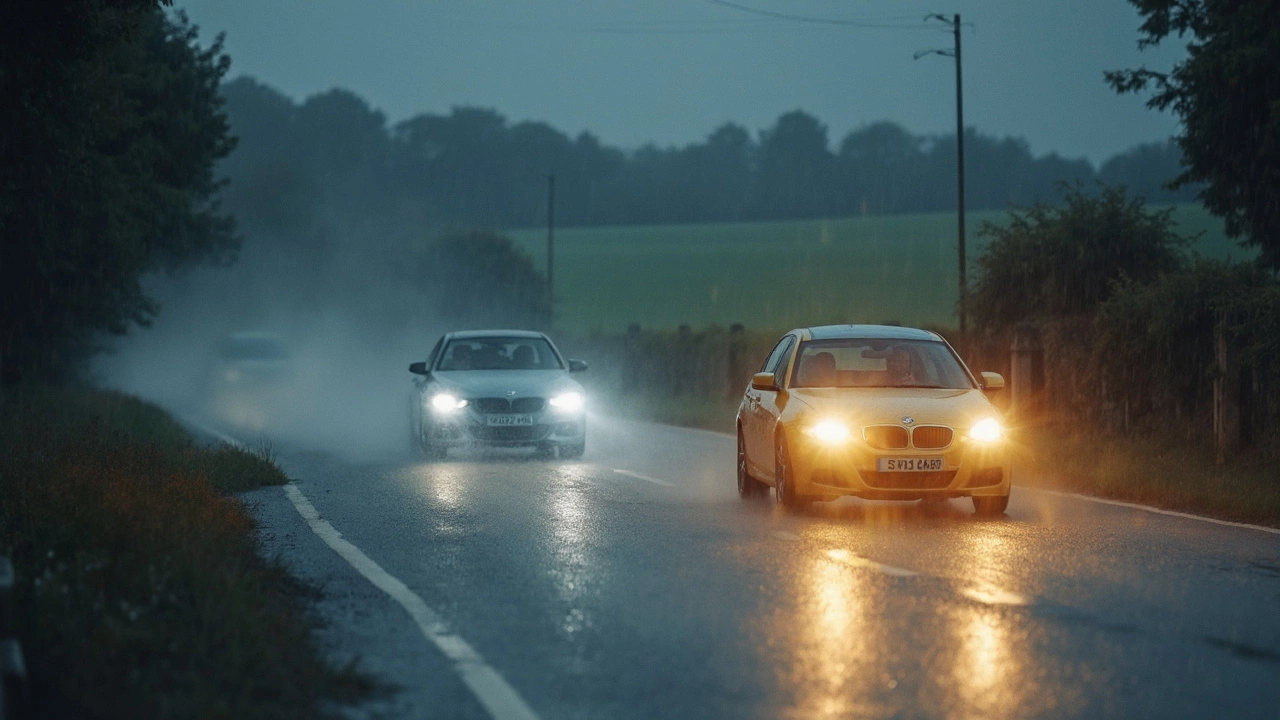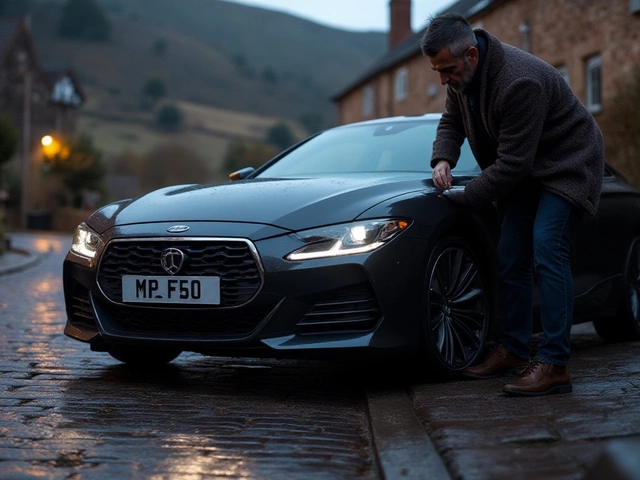Ever notice how some cars seem to slice through the night, while others look dull and hazy? The color of your LED headlights can make a massive difference in what you see—and how well others see you. But it’s not just about making your ride look sharp; headlight color totally affects visibility, especially when the weather’s trying to mess with you.
Most drivers only think about “bright” or “not bright,” but the exact color—measured in kelvin (K)—plays a pretty serious role. Stick around and you’ll see why cops, car modders, and your tired eyeballs all care about picking the right shade. And trust me, there’s more to it than just “white” or “blue.”
- LED Headlight Color Basics
- Seeing and Being Seen: Visibility in Action
- Eye Comfort and Fatigue: The Science
- Legal Rules and Street Smarts
LED Headlight Color Basics
When people talk about LED headlights, the first thing that comes up is color temperature. Color temperature is measured in kelvin (K). It doesn’t change how powerful your headlight is, but it does change how it looks in the dark and bad weather. The numbers tell you what shade of light your car puts out—lower numbers are warmer and look more yellow, while higher numbers are cooler and look more blue or even harsh white.
Here’s the common breakdown you’ll see for headlight color choices:
- 3000K: Yellow light, often used for fog lights. It cuts through rain, fog, and snow.
- 4300K–5000K: Pure white to slightly warm white. This is the sweet spot for most cars right out of the factory.
- 6000K–6500K: Bright white, often with a blue tint. Looks flashy, but can be a pain in bad weather or cause glare for others.
- 8000K and above: Deep blue and even purple vibes. Not street legal in most places. More style than function.
Want to see how it all stacks up? Check out this real-world comparison:
| Kelvin (K) | Color | Best For | Common Use |
|---|---|---|---|
| 3000 | Yellow | Poor weather | Fog lights |
| 4300 | Warm White | Day/nightride | Factory HID |
| 5000-6000 | Pure White | All-around driving | Aftermarket LED |
| 8000+ | Blue/Purple | Show only | Show cars |
Why does this matter? The human eye actually picks up contrast best in white and yellowish light. A quote from the National Highway Traffic Safety Administration hits the nail on the head:
“Headlights around 4300K to 5000K closely mimic daylight and provide the best visibility without excess glare in most conditions.”
So, if you're thinking about switching up your car lighting, don’t just go for cool-looking blue. Take a second to think about where, when, and how you drive. The right LED headlights color isn’t just for show—it’s about actually seeing the road, and making sure everyone else sees you, too.
Seeing and Being Seen: Visibility in Action
Let’s get real: LED headlights aren’t just there for show. The whole point is to see the road ahead—and to make sure others on the road see you, too. Headlight color plays a huge part in how clear things look when you’re behind the wheel, especially when rain, fog, or snow show up.
Colors measured around 4300K to 6000K, which look like natural white light, work best for human eyes at night. They light up road signs, lane markings, and sudden things in the road better than the old-school yellow or super-blue lights. A 2019 study from the Insurance Institute for Highway Safety (IIHS) found people with whiter headlights reacted over half a second faster than those with dimmer, more yellow ones. That may not sound like a big deal—but at 60 mph, it can mean stopping almost 40 feet sooner.
Here’s how different headlight color ranges really perform on the road:
| Color Temperature | Typical Color | Visibility in Bad Weather | User Experience |
|---|---|---|---|
| 3000K | Yellow | Decent in fog and rain but not very bright | Feels old-fashioned |
| 4300K-5000K | Pure White | Great overall visibility, decent in weather | Easiest on the eyes, matches sunlight |
| 6000K+ | Blue-White | Worse in fog and rain (more glare) | Looks cool, but strains eyes on long drives |
If you drive a lot at night or in bad weather, sticking with white light (4300K to 5000K) will help you see hazards and let other drivers spot you earlier. Super blue lights might look high-tech, but they can actually make it harder to see in the rain or fog because they scatter more, causing glare. On the other hand, yellow-tinted lights (like classic 3000K) cut through fog best but aren’t as good for picking out details way down the road.
The main tip? Don’t just shop for headlights that look the brightest online. For safety, go with a color close to daylight—your eyes, and the folks sharing the road, will thank you.

Eye Comfort and Fatigue: The Science
If you've ever finished a long night drive with tired, sore eyes, you've already noticed how much LED headlights and their color matter. Eye comfort isn’t just a nice-to-have; it keeps you alert and safe, especially during those marathon trips.
The color temperature (measured in kelvins) of your headlights can either help or hurt your eyes. The most common factory headlights sit between 4300K and 6000K. Colors on the lower end of that range look more yellow or warm white; on the higher end, they shift to a blue-white. Here’s the catch: our eyes actually prefer the middle. Super blue or ultra-cool white lights (around 8000K and above) cause more glare and make your pupils work harder. That’s what leads to eye strain, headaches, and longer recovery times if you get hit by oncoming glare.
One study from the University of Michigan found that drivers were able to see road signs and lane markings fastest with headlight colors close to daylight, which is about 5000K to 6000K. But go too blue, and you actually lose contrast in heavy rain or fog—plus, it feels less comfortable for your eyes after just 20 minutes behind the wheel.
Check out this quick reference on color vs. comfort:
| Color Temp (Kelvin) | Typical Color | Eye Comfort |
|---|---|---|
| 3000K | Yellow | Low strain, softer on eyes |
| 4300K | Warm white | Good comfort, most OEM bulbs |
| 6000K | Cool white | Great balance of visibility and comfort |
| 8000K | Blue-white | Most eye strain, can cause glare |
So when you’re eyeing an upgrade, stick to the sweet spot: 4300K to 6000K. Colors outside that range might look flashy, but they’re usually harder on your eyes—especially if you drive long distances at night. Your tired brain will thank you, and you’ll keep things safer on the road.
Legal Rules and Street Smarts
Before swapping your headlights, it pays to know the rules. Not every color is street-legal, and rolling around with the wrong shade can get you a ticket—fast. In the U.S., the law generally wants your LED headlights to look white or a soft yellow. Fancy blue or purple shades might look wild, but most states say no way, and you could seriously blind other drivers.
The magic numbers? Headlight colors sit on a scale called Kelvin (K). A 'legal' white beam usually ranges from 4300K to 6000K. Go past 6000K, and those blue-ish lights start raising eyebrows—sometimes even from cops. Here’s how it usually breaks down:
- 4300K–5000K: This is as close as you’ll get to natural sunlight. Clear, crisp, and right in the legal zone.
- 6000K: Still white but a hint of blue. The upper end for most states—check your local rules just to be sure.
- 7000K+: Blue or even purple. Honestly, these are asking for trouble unless your car sits at a show, not on the street.
If you ever cross the border into Canada or most of Europe, things are even tighter—headlights must be close to pure white (about 4000K to 5000K). No wiggle room.
For anyone thinking about tinting or colored films for their headlights, don’t. Even a tiny tint can make your lights ‘non-compliant’ and ruin your visibility. It might even void your insurance after a crash.
Here’s a quick table that sums up headlight laws in a few North American states for car lighting:
| State/Province | Allowed Color | Kelvin Limit |
|---|---|---|
| California | White or Yellow | Up to 6000K |
| Texas | White | Up to 6000K |
| New York | White or Yellow | Up to 6000K |
| Ontario (Canada) | White | Up to 5000K |
Pro tip: Want to upgrade to best headlights? Always double-check your state’s DMV or transport agency website. They’ve got the latest rules posted, and some even tell you exactly what model numbers meet the law.
Straight up—legal headlight colors aren’t up for debate. Picking a legal, safety-first LED saves you headaches, keeps your insurance legit, and helps everyone get home safe. That’s what street smarts looks like.




